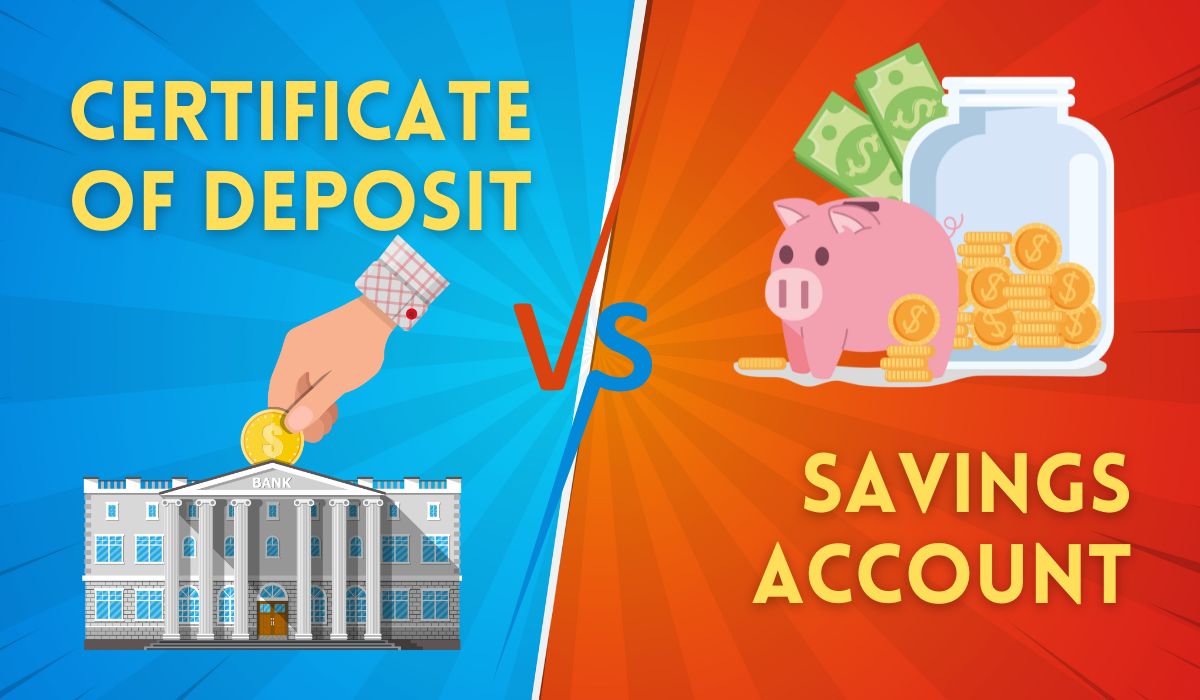
Understanding the nuances between different financial instruments is key to effective money management. This comprehensive guide will dissect the differences between Certificates of Deposit (CDs) and Savings Accounts, two popular vehicles for saving money.
By the end of this article, you'll be equipped with the knowledge to make informed decisions about where to park your hard-earned cash.
A savings account is a basic type of bank account that allows you to deposit money, earn some interest, and withdraw funds, usually easily. These accounts are insured by entities like the Federal Deposit Insurance Corp. or the National Credit Union Administration up to $250,000. The interest rates for savings accounts are typically variable, meaning they can fluctuate based on market conditions.
Savings accounts are particularly suitable for short-term financial goals or as an emergency fund, allowing for frequent access to funds with potential limitations on the number of transactions. However, most savings accounts have maintenance fees, which can sometimes be waived under certain conditions.
A Certificate of Deposit, commonly known as a CD, usually offers a fixed interest rate generally higher than a regular savings account. When you opt for a CD, you agree to keep your money deposited for a set amount of time, known as the term, which can range from a few months to several years. The interest rates are fixed, so they do not change throughout the term of the CD. The longer the term, the higher the interest rate you will earn. However, accessing your funds before the CD's maturity date often incurs a penalty, which could be a flat fee or a percentage of the interest earned, and in some cases, it could be all the interest earned. Like savings accounts, CDs are also federally insured up to $250,000.
|
Feature |
Savings Account |
Certificate of Deposit (CD) |
|
Interest Rate |
Generally, it offers a low variable rate, subject to market changes. |
Typically, it provides a fixed rate, usually higher than savings accounts. |
|
Access to Money |
Funds can be withdrawn anytime, often with a set transaction limit. |
Access is restricted until the end of the term; early withdrawal may incur penalties. |
|
Minimum Initial Deposit |
Varies; for example, at Bank of America, it’s around $100. |
It also varies; at Bank of America, it’s approximately $1,000. |
|
Fees |
May include monthly fees, though these can sometimes be waived. |
Typically, there are no monthly fees. |
Savings Accounts: Ideal for short-term goals or emergency funds due to their liquidity. They're also great for teaching financial management, especially to children. Savings accounts are well-suited for situations where you may need quick access to your funds, such as for an upcoming large purchase or unexpected expenses.
CDs: Better for longer-term savings goals, as they offer higher interest rates in exchange for locking in your funds for a specified period. They are a safe investment choice for goals like saving for a wedding, paying tuition fees, or making a down payment on a house. CDs can also be a part of a diversified retirement portfolio. An effective strategy for managing CDs is to create a CD ladder, which involves investing in multiple CDs with different maturity dates, allowing for a balance between higher rates and periodic access to funds.
Interest rates for CDs are influenced by a variety of factors, including the overall economic climate, inflation, and market dynamics. Generally, when inflation is low, interest rates also tend to be lower, and vice versa. A key influence on CD rates is the federal funds rate, which is the interest rate at which banks lend money to each other overnight. Actions by the Federal Reserve can cause macro rate environments to shift, affecting interest rates for CDs, savings accounts, and borrowed money. Most CD rates are fixed and don't change during the term. However, some CDs, like bump-up or step-up CDs, can have fluctuating rates depending on economic factors.
Choosing between a savings account and a CD requires carefully assessing your financial goals, access needs, and risk tolerance. Savings accounts offer flexibility and easier access, making them ideal for emergency funds or short-term goals. In contrast, CDs provide higher fixed interest rates in exchange for locking in your funds, suitable for long-term financial planning. By understanding the factors influencing their interest rates and comparing their features, you can make a well-informed decision that aligns with your financial objectives. Remember, the right choice varies for each individual, and sometimes a combination of both savings tools can be the most strategic approach to achieve a healthy financial balance.
Our detailed guide explains how to save money when moving out. Learn more by visiting Money Now and exploring our comprehensive resources.
